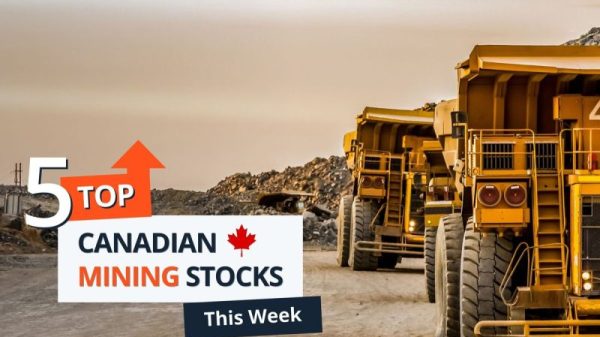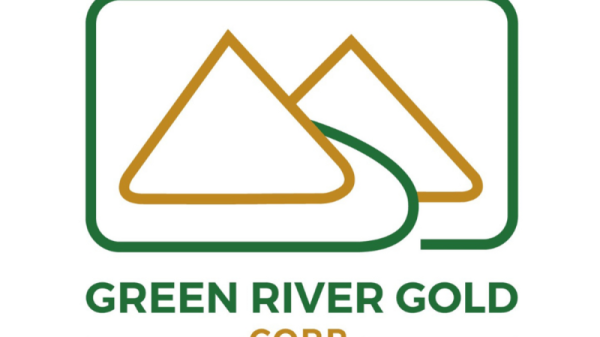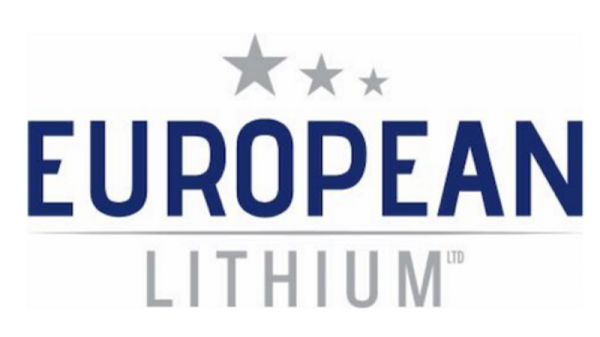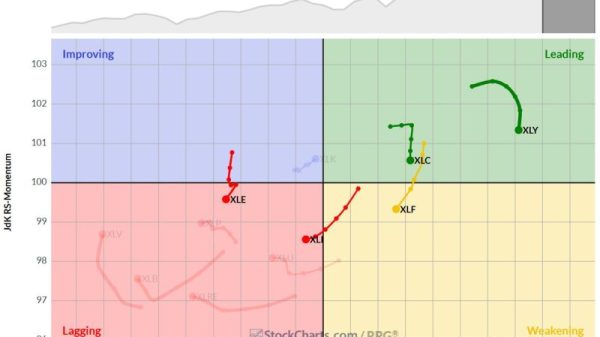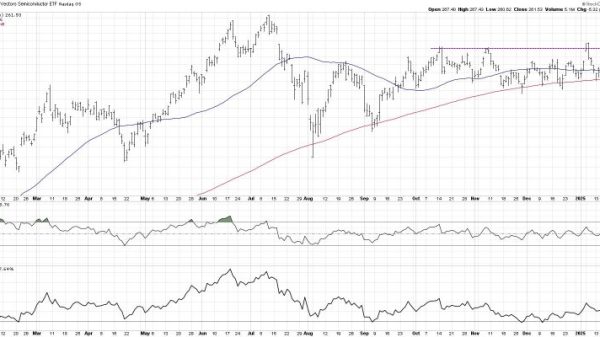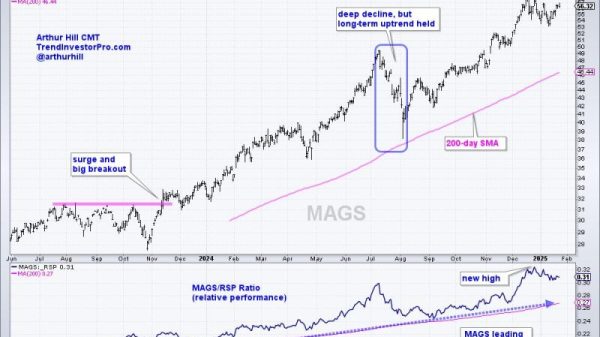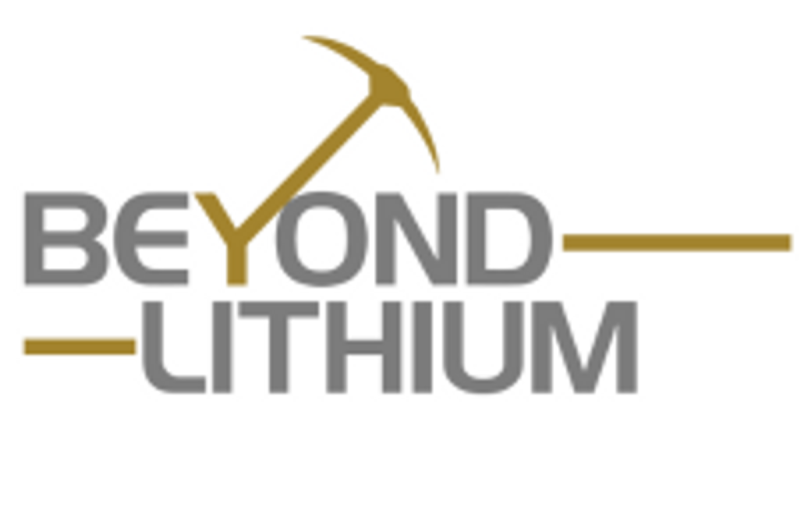Highlights
Drilling intercepts encountered high grade spodumene-bearing pegmatites in wider pegmatites zone:2.30% Li2O and 178ppm Cs over 3.84m in wider pegmatites zone of 0.46% Li2O and 250ppm Cs over 36.25m (EF23-04).0.58% Li2O and 387ppm Cs over 3.2m and 0.51% Li2O and 960ppm Cs over 2.63m in wider pegmatites zone of 0.30% Li2O and 348ppm Cs over 24.9m (EF23-02).0.97% Li2O and 236ppm Cs over 1.58m in wider pegmatites zone of 0.29% Li2O over 15.36m (EF23-03).Holes #1-4 are mineralized with lithium from top to bottom (hole lengths vary between 30 to 60m).Six out of the seven holes (EF23-01 to 05 & 07) ended in mineralization signifying the system remains open at depth and along strike of the 13km long exploration corridor.Six out of the seven holes have pervasive and strong lithium and cesium mineralization in the alteration halo around the pegmatites indicating the potential of a larger system with wider pegmatites at depth and along strike. Drilling results show a doubling of the width of the Wenasaga North Zone from 35 to 70m. Drilling results confirm new pegmatites zone at depth that was not exposed previously on surface.The Sandy Creek West Zone has the same geochemical signatures with highly anomalous lithium and cesium as the drilling results from the Wenasaga North Zone implying the Sandy Creek West Zone is proximal to spodumene mineralization.
Beyond Lithium Inc. (CSE: BY) (OTCQB: BYDMF) (the ‘Company’ or ‘Beyond Lithium’) is pleased to announce the drill results of its 2023 drilling program at the Ear Falls Project (20,623 ha) with core logging facility located in the town of Ear Falls, Ontario, that is just 10 minutes away from the site. The 2023 drilling program completed seven AQ-sized drill holes totaling 329.59m. The seven drill holes drilled tested 200m strike length of the initial spodumene-bearing pegmatites discovery at Ear Falls, the Wenasaga North Zone, with grab samples up to 4.54% Li2O (see press release dated September 17, 2023).
Allan Frame, President & CEO of Beyond Lithium, stated: ‘Our technical team could not be more pleased with the results from our initial drilling campaign at Ear Falls. The results released today meet and exceed our objectives for this early-stage project. To advance the project this quickly is remarkable. Firstly, the strong and pervasive lithium and cesium mineralization near surface at the Wenasaga North Zone indicates the potential of a larger system with wider pegmatites at depth and along strike North Zone. Secondly, the Sandy Creek West Zone has the same geochemical signatures with highly anomalous lithium and cesium as the drilling results from the Wenasaga North Zone implying the Sandy Creek West Zone is proximal to spodumene mineralization confirming the 13-kilometer prospective corridor.’
He added: ‘From a strategic perspective, it is important to keep in mind that the positive results announced today are from only one of many promising projects we have in the district. In that district, Beyond Lithium has the Victory Project, the Ear Falls Project, and the Mavis Lake Group Projects (Satellite, Laval, Gullwing-tot, Webb East, Webb West, Temple Bay, Ogani Lake, and McKenzie Bay) which are located within 100 km of each other. The district also hosts three regionally significant lithium deposits:
The Mavis Lake Lithium deposit owned by Critical Resources Ltd. with 8 Mt at 1.07% Li2O at a cut-off grade of 0.3% Li2O. (1)The Root and McComb Lithium deposit owned by Green Technologies Metals with 12.6 Mt at 1.21% Li2O at a cut-off grade of 0.2% Li2O. (3)
Wenasaga North Zone Drilling
Multiple subparallel spodumene-bearing pegmatites have been mapped over a 1.5km trend at the Wenasaga North Zone since its discovery made in September 2023. The seven AQ sized drill holes drill only tested 200m (13%) along strike of the 1.5km long spodumene-bearing pegmatites trend identified within the Wenasaga North Zone (Figure 1).
The seven drill holes only drill tested up to 60m below surface. The encouraging results and useful data collected from the 2023 drilling program warrant longer drill holes to drill test the deeper part of the system and more step-out holes to continue expanding the footprint of the system. A drilling and trenching permit application was submitted last month.
Figure 1 2023 Drill Tested 200m Area of the Overall 1.5km Trend of the Wenasaga North Zone
To view an enhanced version of this graphic, please visit:
https://images.newsfilecorp.com/files/8620/194353_efe563b2b431bb96_002full.jpg
Holes #1 to 4 (EF23-01 to EF23-04) all intercepted multiple subparallel spodumene-bearing pegmatites packaged with metasediments at depth with the pegmatites zone confirming higher grade zone are enveloped by wider pegmatites zone that was observed from the stripping and channel sampling program. The 2023 stripping and channel sampling program only outlined the pegmatites zone up to 9.52m due to the disturbance limitation allowed for stripping on surface under our initial permit. The pegmatites zone delineated at depth including the projected spodumene pegmatites from the NE part of the Wenasaga North Zone have now been expanded up to 70m in width that is seven times wider that what was observed from the surface stripping program (Figure 2). The progression of the 2023 exploration program from surface mapping to surface stripping and to follow-up drilling has proven to be effective at exposing wider pegmatites zone from surface to at depth.
Figure 2 2023 Ear Falls Drill Holes Plan Map With >0.5% Li2O Grab Sample (white), Channel Sample (blue), And Core Sample (orange) Assays Along the 200m of Wenasaga North Zone
To view an enhanced version of this graphic, please visit:
https://images.newsfilecorp.com/files/8620/194353_efe563b2b431bb96_003full.jpg
In addition, holes #1-4 (EF23-01 to EF23-04) are mineralized with lithium and cesium from top to bottom of the holes (Figure 3). On top of that, 6 out of the 7 holes (EF23-01 to EF23-05 & EF23-07) were shut down in lithium mineralization demonstrating the system remains open at depth and along strike (Figure 4).
Drilling Results (Table 2):
2.30% Li2O and 178ppm Cs over 3.84m in wider pegmatites zone of 0.46% Li2O and 250ppm Cs over 36.25m (EF23-04).0.58% Li2O and 387ppm Cs over 3.2m and 0.51% Li2O and 960ppm Cs over 2.63m in wider pegmatites zone of 0.30% Li2O and 348ppm Cs over 24.9m (EF23-02).0.97% Li2O and 236ppm Cs over 1.58m in wider pegmatites zone of 0.31% Li2O over 11.41m (EF23-03).
Figure 3 Interpreted Geological Cross Section of Drill Holes EF23-03 to EF23-05
(Looking NE)
To view an enhanced version of this graphic, please visit:
https://images.newsfilecorp.com/files/8620/194353_efe563b2b431bb96_004full.jpg
Entire drill hole (top to bottom) weighted average:
0.32% Li2O and 188ppm Cs over 60.66m (EF23-04)0.27% Li2O and 284ppm Cs over 32.47m (EF23-02)0.20% Li2O and 194ppm Cs over 38.26m (EF23-03)0.20% Li2O and 188ppm Cs over 29.87m (EF23-01)
Moreover, drilling results confirmed a new pegmatites zone at depth that was not exposed previously on surface from the recent stripping and channel sampling program in which suggesting deeper holes should be considered in the next drill program (Figure 4):
0.22% Li2O over 9.85m from 39.80 to 49.65m (EF23-04).
Mr. Lawrence Tsang, VP Exploration for Beyond Lithium noted: ‘As the lithium and rare earth minerals concentrated fluids and volatiles passed through the Wenasaga North Zone’s structure and formed spodumene-bearing pegmatites, the fluids also interacted and altered the surrounding host rock resulting as the alteration halo.’
‘In general, the wider the alteration halo around the pegmatites is, the larger amount of fluid and the larger the system that altered a large area of surrounding rocks. In reverse, a small and narrow dyke system would result a slender (1-2m) to no alteration halo around the pegmatites. Yet at the Wenasaga North Zone, the Li and Cs values in the host rocks and the alteration halo around the spodumene-bearing dykes persist for over 10 to 30m indicating that these pegmatites are probably connected to a larger system at depth or along strike that is not exposed on surface (Figure 5).’
In geology, alteration is a common term used to describe the transformation of rocks and minerals due to various geological processes, such as weathering, metamorphism, and hydrothermal activity (4). Alteration halo refers to a change in the physical or chemical properties of rocks and minerals in the host rocks around the main structure containing the rare earth minerals concentrated fluids and volatiles. The alteration was caused when the hot, mineral-rich fluids interact with the surrounding host rocks and minerals, causing them to change in terms of their mineral composition, texture, and structure. For example, the extensive lithium and cesium mineralization in the metasediment host rocks around the pegmatites is the alteration halo as a result of the rare earth concentrated fluid passing through the pegmatites structure and altering the surrounding host rocks. The wider alteration halo indicates a more extensive alteration event, while a narrower alteration halo suggests a more limited or shallow system(4).
Figure 4 Interpreted Geological Cross Section of Drill Holes EF23-03 to 05 with newly identified pegmatites zone, end of holes mineralization, and holes top to bottom mineralization (Looking NE)
To view an enhanced version of this graphic, please visit:
https://images.newsfilecorp.com/files/8620/194353_efe563b2b431bb96_005full.jpg
Lawrence Tsang commented further: ‘Beyond Lithium’s technical team is thrilled with getting these great results from the AQ sized drilling program that is less than a total of 330m of drilling. The program was able to accomplish what we originally designed the drilling program for which was to gather additional geological data to evaluate the Ear Falls system for planning the next drilling and exploration program. We now have a much better understanding of the Ear Falls system in terms of geochemistry, structure, lithology, mineralogy, size, and potential. The extensive lithium and cesium mineralization we observed in the alteration halo around the spodumene dykes indicating these dykes are most likely connected to a larger system either at depth or along strike (Figure 5); six of the seven holes ended in mineralization suggesting the system remains open at depth and along strike. In short, the 2023 program has delineated more drill targets for us to follow up in the next drill program for deeper and more step-out holes (Figure 5).’
Figure 5 Interpreted Geological Cross Section of The Ear Falls System with Additional Subparallel Dykes projected at 030-040 Azimuth and Surface Mapped Spodumene-bearing Pegmatites in Comparison with the Footprint of the 2023 Drilling (blue box) and Common Pegmatites Depth of Over 300m Below Surface
To view an enhanced version of this graphic, please visit:
https://images.newsfilecorp.com/files/8620/194353_efe563b2b431bb96_006full.jpg
Upsize Potential
Based on the 2023 stripping and channel sampling programs, the Ear Falls Project was observed as being a highly structurally controlled system. So far, the 2023 program only drill tested the 030-040 azimuth orientation which is one of the two dyke orientations identified from the striping and the drilling programs. The other orientation is at 100-120 azimuth, probably a conjugate set along the main structure, yet to be drill tested. The next drill program will also be drill testing the 100-120 azimuth orientation to determine which orientation, the 030-040 or the 100-120 azimuth, is the dominate set and also to look for where the two orientations might converge together and dilate for hosting the wider and higher lithium-grade pegmatites (Figure 6).
Furthermore, the surface exposed spodumene-bearing pegmatites (see press release dated December 19, 2023) correlate well with the spodumene-bearing pegmatites intercepted in drill holes at depth. Based on the projected orientation of these dykes at 030-040 azimuth, the additional spodumene-bearing pegmatites located northeast and southwest from the drill tested area (labeled as ‘NE’ and ‘SW’ in Figure 6) are additional subparallel dykes instead of the continuation of the same dykes which would now have doubled the width of the Wenasaga North Zone from 35 to 70m (Figure 2).
Figure 6 Identified Two Dyke Orientations: 1) 030-040 Azimuth in Red 2) 100-120 Azimuth in Orange
To view an enhanced version of this graphic, please visit:
https://images.newsfilecorp.com/files/8620/194353_efe563b2b431bb96_007full.jpg
The discovery of the Sandy Creek West Zone was made after Beyond Lithium’s technical team prospected a new clear-cut area located in the SW region of the 13km exploration corridor (see press release dated December 19, 2023). The Sandy Creek West Zone is situated on a 100-meter-wide ridge with numerous pegmatite outcrops with grab samples assaying up to 0.4% Li2O. Both Wenasaga North Zone and the Sandy Creek West Zone geochemical signatures show great similarity in the averaged lithium oxide and cesium grades of host rocks and alteration halo in granite and metasediments assaying at about 0.20% Li2O and 200ppm Cs (Table 1). This background geochemistry likeness essentially implies the proximity of spodumene mineralization at the Sandy Creek West Zone.
Sandy Creek WestGrab30.23228
Table 1 Averaged Li2O % And Cs Background Grade of Host Rocks and Alteration Halo Similarity Between Wenasaga North Zone and Sandy Creek West Zone
Lawrence Tsang concluded: ‘Most lithium deposits contain – or are modeled with – both zones of higher grade of over 1% Li2O and zones of above cut-off grade at about 0.20 to 0.40% Li2O. At this stage for the Ear Falls Project, it is more important to understand the fundamental geology of the system to determine if the project has the prospectivity to outline an economical deposit rather than to put a box around the system and start defining a smaller section of the system. Especially, we are just scratching the surface at Ear Falls where the pervasive lithium and cesium mineralization in six out of the seven drill holes demonstrated the Wenasaga North Zone could connect to something bigger at depth or along strike. Also, the improved understandings of the structural control and the geochemical signatures of the dykes have enhanced our confidence to explore the Sandy Creek West Zone and to expand along the 13 km exploration corridor. At this stage, the Wenasaga North Zone only accounts for 1% of the entire Ear Falls Project. The 2023 drilling only drill tested 200m of strike length and 60m below surface. As we continue to expand and to drill deeper and along trend, we will eventually get to the hotter parts and the higher grade of the system.’
EF23-02024.924.90.30348incl.1.33.932.630.51960also incl.12.1515.353.20.58387
EF23-038.5523.9115.360.29200incl.12.523.9111.410.31218incl.18.5720.151.580.97236also incl.2223.911.910.34202
EF23-047.1349.6542.520.41235incl.13.449.6536.250.46250or13.434.9321.530.65269incl.13.423.059.650.34300also incl.25.1634.939.771.06236or25.16293.842.30178
EF23-052.155.573.420.19145.00
EF23-06no significant interval
EF23-0717.822.474.670.2021425.2527.452.20.1710028.129.941.840.207741.2242.941.720.1912744.8547.242.390.24133
Table 2 Assay Summary for Reported Drill Holes
Table 3 Ear Falls 2023 Drill Collars Table of Reported Drill Holes
All seven holes described in this news release were drilled broadly perpendicular to the dyke and the pegmatites zone orientations so that the true thickness of reported intercepts will range somewhere between 70% to 100% of the drilled true width.
References
1 Critical Resources Limited, Mavis Lake. https://www.criticalresources.com.au/our-projects/mavis-lake-lithium-project/
2 Avalon Advanced Materials, Separation Rapids. https://www.avalonadvancedmaterials.com/projects/separation_rapids/
3 Green Technology Metals, Root/McComb. https://www.greentm.com.au/root-project
4 Hydrothermal Alteration, Mining Geology. https://geologyscience.com/geology-branches/mining-geology/hydrothermal-alteration/?amp
Quality Assurance/Quality Control
All drill core samples were collected under the supervision of Beyond Lithium’s geologists. Drill core was transported from the drill to the core processing facility where it was logged and photographed. AQ sized drill cores were sampled as whole core. Samples were then bagged, and certified reference materials were inserted at 10th samples. Groups of samples were placed in rice bags and zip tied in order to maintain a chain-of-custody and transported from Beyond Lithium’s core logging facility to SGS laboratory in Red Lake, Ontario.
Sample preparation for this drill program was carried out by SGS in Red Lake, Ontario, and the sample analytical work for this drill program was preformed by SGS in Burnaby, British Columbia. Samples were prepared for analysis according to SGS method CRU75: individual samples were crushed to 75% passing through 2 mm screen; a sub-sample was riffle split (SPL-RF) and then pulverized (PUL-85) such that 85% passed through 75 micron screen. A 0.2-gram sub-sample of the pulverized material was then dissolved in a sodium peroxide solution and analysed for lithium according to ALS method ME-ICP82b. Another 0.1-gram sub-sample of the pulverized material was analysed for 56 elements according to SGS method ICM91A50. All results passed the QA/QC screening at the lab, all inserted reference materials returned results that were within acceptable limits.
Qualified Person and Third-Party Data
The scientific and technical information in this news release has been reviewed and approved by Lawrence Tsang, P.Geo., VP Exploration of the Company. Lawrence Tsang is a ‘qualified person’ as defined in National Instrument 43-101 – Standards of Disclosure for Mineral Projects.
About Beyond Lithium Inc.
Beyond Lithium Inc. is the largest greenfield lithium exploration player in Ontario with 63 high potential greenfield lithium properties totalling over 195,000 hectares. The Company has adopted the project generator business model to maximize funds available for exploration projects, while minimizing shareholder dilution. Beyond Lithium is advancing certain of its projects with its exploration team and will seek to option other properties to joint venture partners. Partnering on various projects will provide a source of non-dilutive working capital, partner-funded exploration, and long-term residual exposure to exploration success.
Beyond Lithium currently has 33,874,482 common shares outstanding.
Please follow @BeyondLithium on Twitter, Facebook, LinkedIn, Instagram and YouTube.
For more information, please refer to the Company’s website at www.beyondLithium.ca.
CAUTIONARY STATEMENT REGARDING FORWARD-LOOKING INFORMATION: This news release includes certain ‘forward-looking information’ within the meaning of applicable Canadian securities legislation. All statements, other than statements of historical fact, included herein including, without limitation, statements regarding future capital expenditures, anticipated content, commencement, and cost of exploration programs in respect of the Company’s projects and mineral properties, anticipated exploration program results from exploration activities, resources and/or reserves on the Company’s projects and mineral properties, and the anticipated business plans and timing of future activities of the Company, are forward-looking information. Although the Company believes that such statements are reasonable, it can give no assurance that such expectations will prove to be correct. Often, but not always, forward-looking information can be identified by words such as ‘pro forma’, ‘plans’, ‘expects’, ‘will’, ‘may’, ‘should’, ‘budget’, ‘scheduled’, ‘estimates’, ‘forecasts’, ‘intends’, ‘anticipates’, ‘believes’, ‘potential’ or variations of such words including negative variations thereof, and phrases that refer to certain actions, events or results that may, could, would, might or will occur or be taken or achieved. In stating the forward-looking information in this news release, the Company has applied several material assumptions, including without limitation, that market fundamentals will result in sustained precious and base metals demand and prices, the receipt of any necessary permits, licenses and regulatory approvals in connection with the future exploration of the Company’s properties, the availability of financing on suitable terms, and the Company’s ability to comply with environmental, health and safety laws.
Forward-Looking information involves known and unknown risks, uncertainties and other factors which may cause the actual results, performance or achievements of the Company to differ materially from any future results, performance or achievements expressed or implied by the statements of forward-looking information. Such risks and other factors include, among others, statements as to the anticipated business plans and timing of future activities of the Company, the proposed expenditures for exploration work on its properties, the ability of the Company to obtain sufficient financing to fund its business activities and plans, delays in obtaining governmental and regulatory approvals (including of the Canadian Securities Exchange), permits or financing, changes in laws, regulations and policies affecting mining operations, risks relating to epidemics or pandemics such as COVID-19, the Company’s limited operating history, currency fluctuations, title disputes or claims, environmental issues and liabilities, as well as those factors discussed under the heading ‘Risk Factors’ in the Company’s prospectus dated February 23, 2022 and other filings of the Company with the Canadian securities regulatory authorities, copies of which can be found under the Company’s profile on the SEDAR website at www.sedar.com.
Readers are cautioned not to place undue reliance on forward-looking information. The Company undertakes no obligation to update any of the forward-looking information in this news release except as otherwise required by law.
For further information, please contact:
Allan Frame
President and CEO
Tel: 403-470-8450
Email: allan.frame@beyondLithium.ca
Jason Frame
Manager of Communications
Tel: 587-225-2599
Email: jason.frame@beyondLithium.ca
To view the source version of this press release, please visit https://www.newsfilecorp.com/release/194353
News Provided by Newsfile via QuoteMedia

